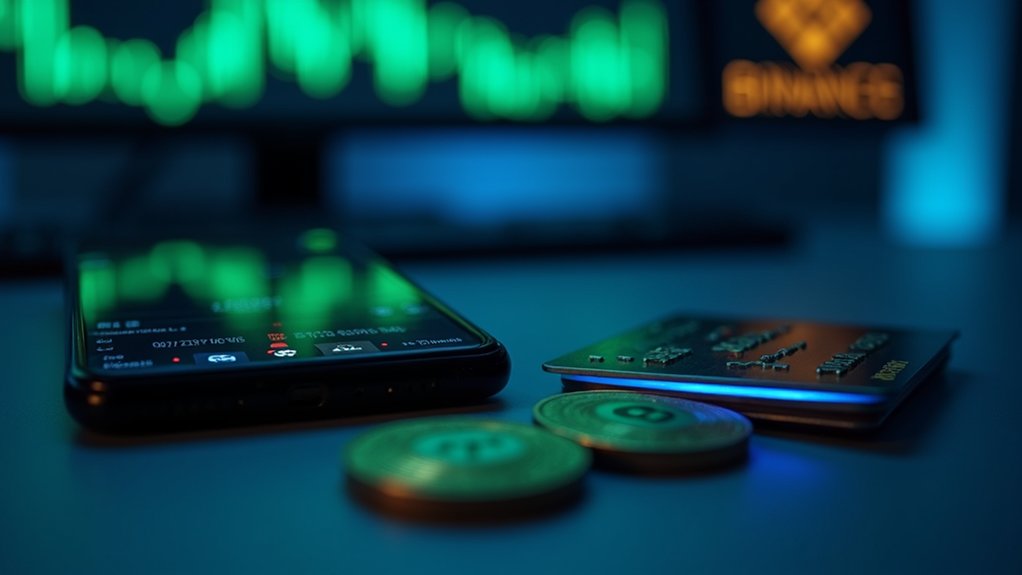Wrapped cryptocurrencies are digital tokens that represent other cryptocurrencies on foreign blockchain networks, maintaining a strict 1:1 value relationship with their foundational assets. These tokens function through a custodial system where original assets are securely locked while their wrapped versions operate on different chains, enabling cross-chain interoperability and expanded utility. Popular examples include Wrapped Bitcoin (WBTC), which allows Bitcoin to participate in Ethereum's DeFi ecosystem. This bridging mechanism resolves technical incompatibilities between isolated networks while preserving the original asset's fundamental characteristics.

With blockchain technology continuing to evolve across multiple ecosystems, wrapped tokens have emerged as an essential mechanism for facilitating cross-chain interoperability in the digital asset landscape. These tokens function as digital representations of other cryptocurrencies on foreign blockchains through a process known as tokenization, maintaining a strict 1:1 relationship with their foundational assets. The fundamental purpose of wrapped tokens is to bridge the technical incompatibilities between different blockchain networks, allowing assets native to one ecosystem to function within another while preserving their original value proposition.
The architecture supporting wrapped tokens relies on a system of secure vaults where the original cryptocurrency is locked while its wrapped counterpart circulates on a different blockchain. This custodial arrangement guarantees that each wrapped token is fully backed by its corresponding native asset, maintaining price parity between the two versions. Wrapped Bitcoin (WBTC), for instance, represents Bitcoin on the Ethereum blockchain, with each WBTC token backed by exactly one Bitcoin held in reserve, enabling Bitcoin holders to participate in Ethereum's decentralized finance ecosystem without selling their original holdings. The Wrapped Tokens DAO collectively decides on custodians and merchants who oversee this system of reserve management. These wrapped tokens provide users with faster transaction speeds compared to their native counterparts when operating on more efficient blockchains.
The creation of wrapped tokens typically involves a minting process facilitated by merchants or custodians who verify and secure the original assets. This process transforms the limited functionality of single-chain assets into versatile, cross-chain instruments that can be deployed across multiple platforms.
The economic significance of wrapped tokens extends beyond mere technological convenience, fundamentally expanding the utility and liquidity of cryptocurrencies across previously isolated networks. As institutional support grows, wrapped tokens are becoming increasingly important for asset allocation strategies that balance risk while gaining exposure to diverse blockchain ecosystems.
For the broader cryptocurrency ecosystem, wrapped tokens serve as critical infrastructure that enhances capital efficiency and market depth. By enabling assets to flow between different blockchain environments, these tokenized representations reduce fragmentation in the digital asset marketplace and create opportunities for more sophisticated financial products.
The continued development of wrapped token standards and secure bridging protocols remains crucial for advancing the amalgamation of blockchain networks into a unified financial system capable of supporting increasingly complex decentralized applications.
Frequently Asked Questions
Are Wrapped Tokens Taxed Differently Than Their Original Counterparts?
Wrapped tokens generally trigger taxable events during both wrapping and unwrapping processes, unlike simply holding their original counterparts.
Tax authorities typically consider these conversions to be crypto-to-crypto disposals, requiring capital gains calculations based on the difference between cost basis and fair market value at conversion time.
While some jurisdictions may offer exemptions, most tax regimes adopt a conservative approach, treating wrapped token transactions as distinct, reportable events with potential tax liabilities, despite their economic equivalence to the fundamental assets.
Can Wrapped Tokens Be Used for Staking?
Wrapped tokens can indeed be utilized for staking across various DeFi protocols and centralized exchanges. Users can deposit these tokens into liquidity pools, earning transaction fees and interest through mechanisms like liquidity farming.
The process typically involves receiving LP tokens in the role of proof of participation, while custodians maintain the 1:1 peg of the foundational assets. This approach offers benefits including passive income generation, interoperability across blockchains, and expanded utility of native assets in diverse ecosystems.
What Happens if the Custodian Loses the Original Assets?
If the custodian loses the original assets backing wrapped tokens, the financial consequences are severe and multifaceted.
The wrapped tokens become effectively worthless, since their value derives entirely from the custodian's ability to redeem them for the foundational asset.
This catastrophic failure typically triggers immediate price collapse, severely diminished liquidity, erosion of market confidence, and potential contagion effects across interconnected DeFi protocols that rely on the compromised wrapped token as collateral or for liquidity provision.
How Do Slippage Rates Compare Between Wrapped and Native Tokens?
Slippage rates in wrapped tokens typically exceed those of native tokens due to several compounding factors.
The wrapping/unwrapping process introduces additional transaction costs through gas fees, custodial premiums, and liquidity constraints in trading pairs.
Native tokens circumvent these inefficiencies by executing directly on their blockchain, avoiding intermediary processes that contribute to price deviation.
During periods of high market volatility, wrapped tokens experience amplified slippage since the minting/burning mechanisms struggle to maintain precise 1:1 pegs with their fundamental assets.
Can Wrapped Tokens Be Created for Non-Blockchain Assets?
Technically, wrapped tokens cannot be created for non-blockchain assets in the strictest sense, since wrapping specifically refers to the cross-chain representation of blockchain-native cryptocurrencies.
Non-blockchain assets like fiat currencies, commodities, and real estate can be tokenized, which involves a different process requiring centralized custody, regulatory compliance, and reserve auditing, rather than the decentralized bridges and protocols employed in traditional wrapping mechanisms for cross-chain interoperability.









